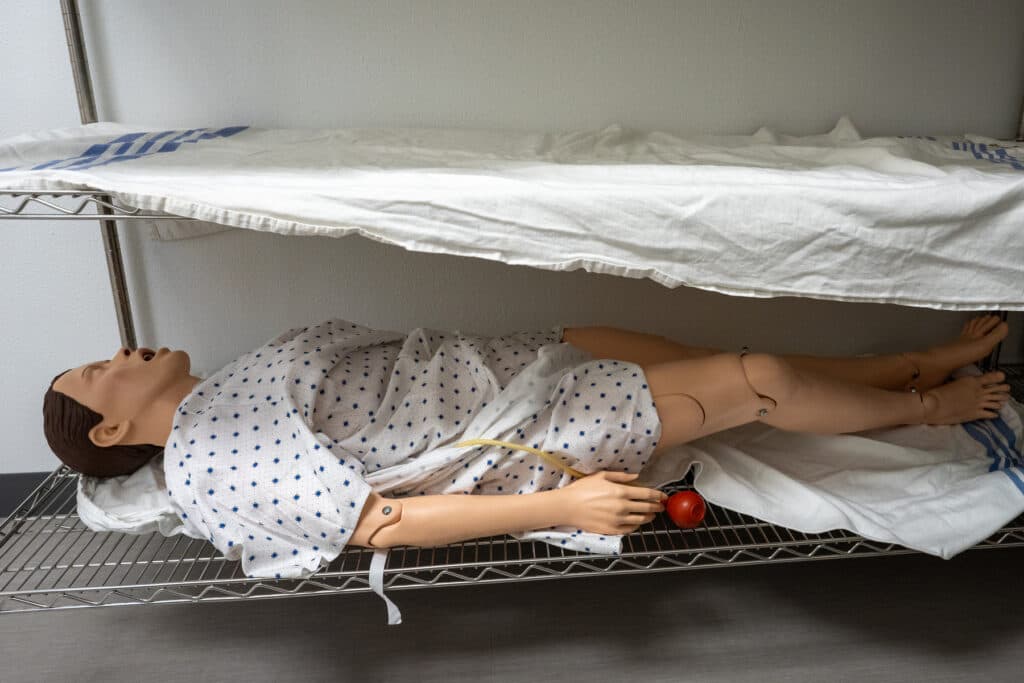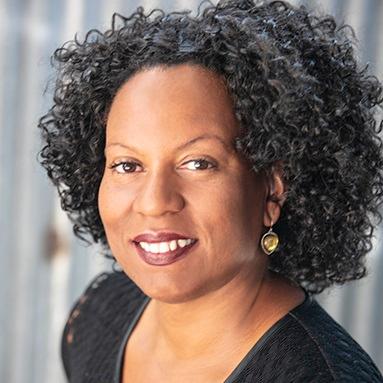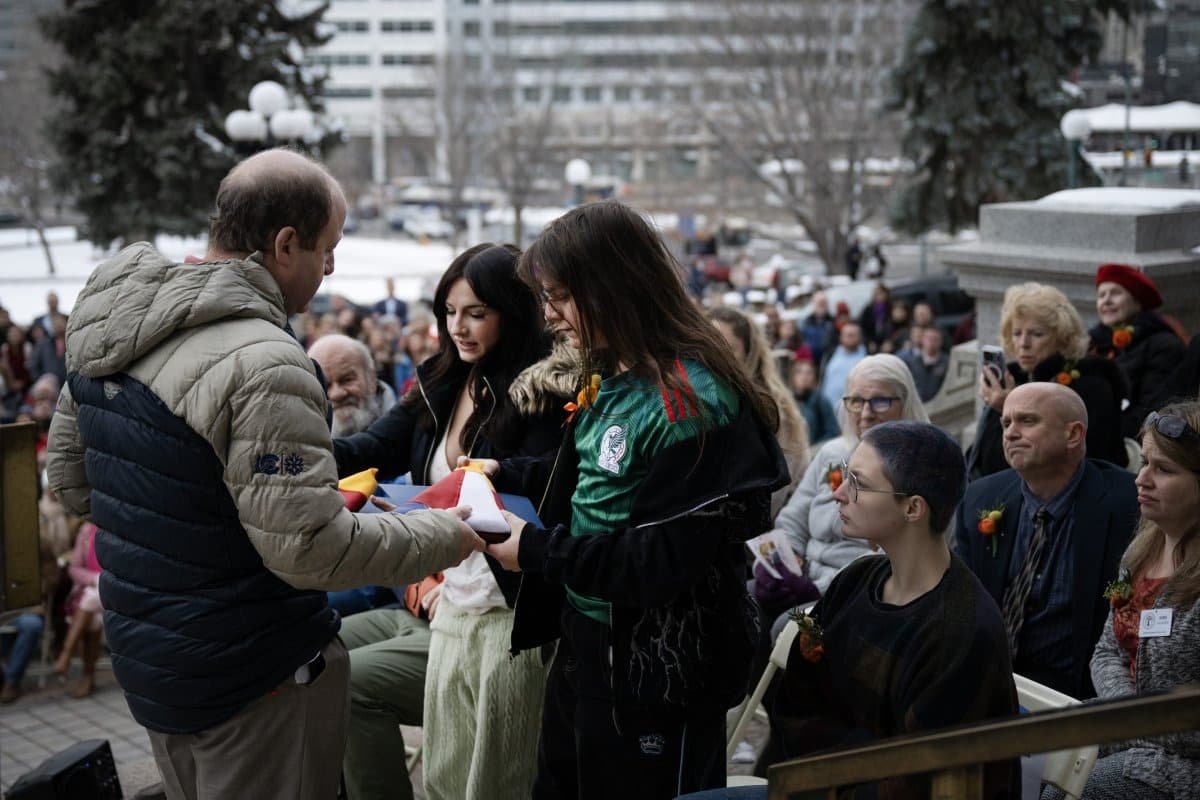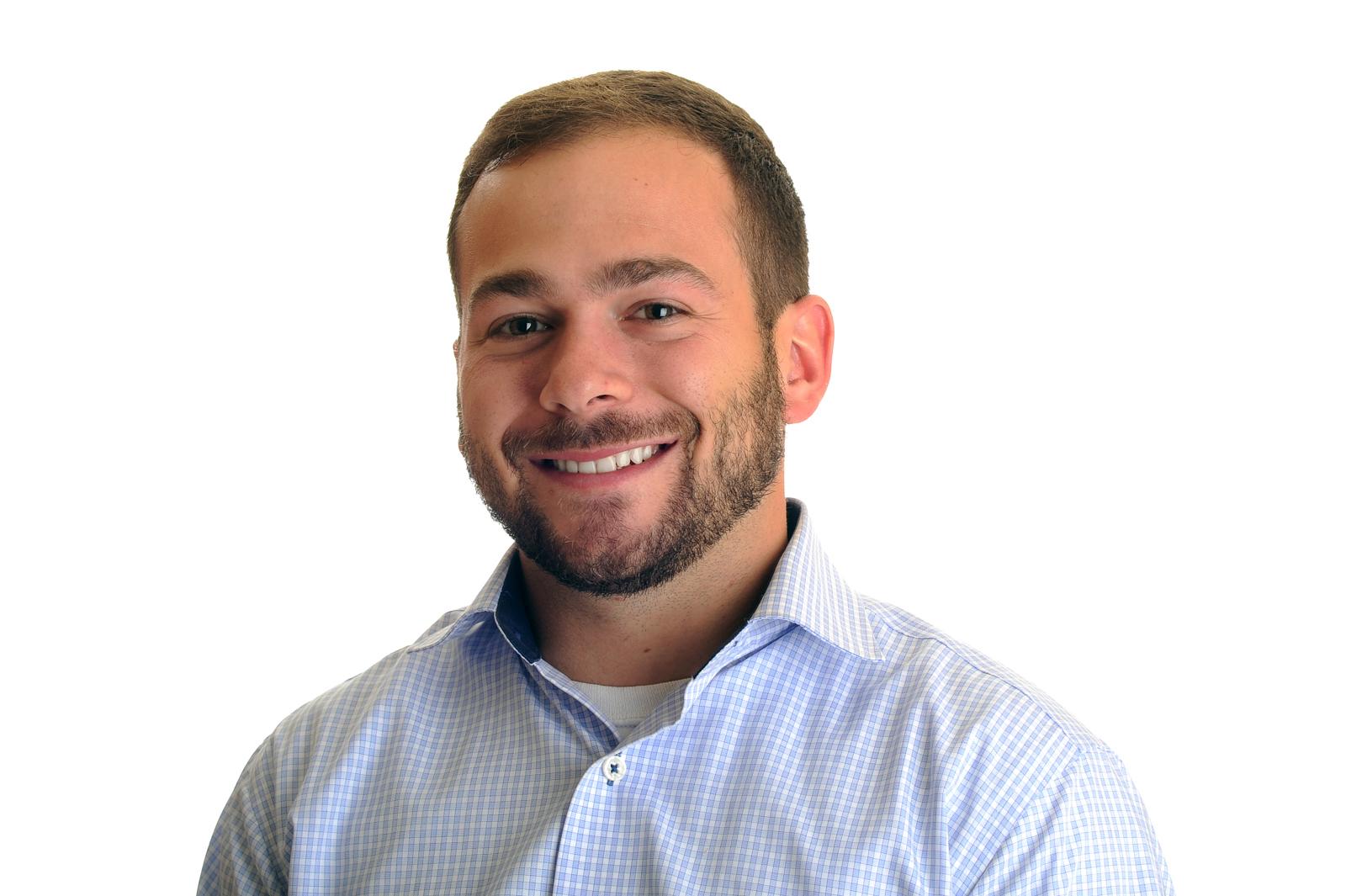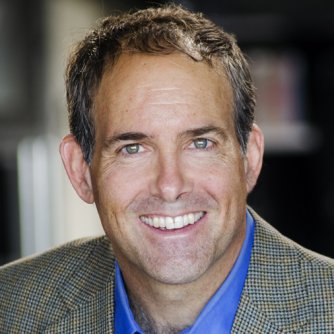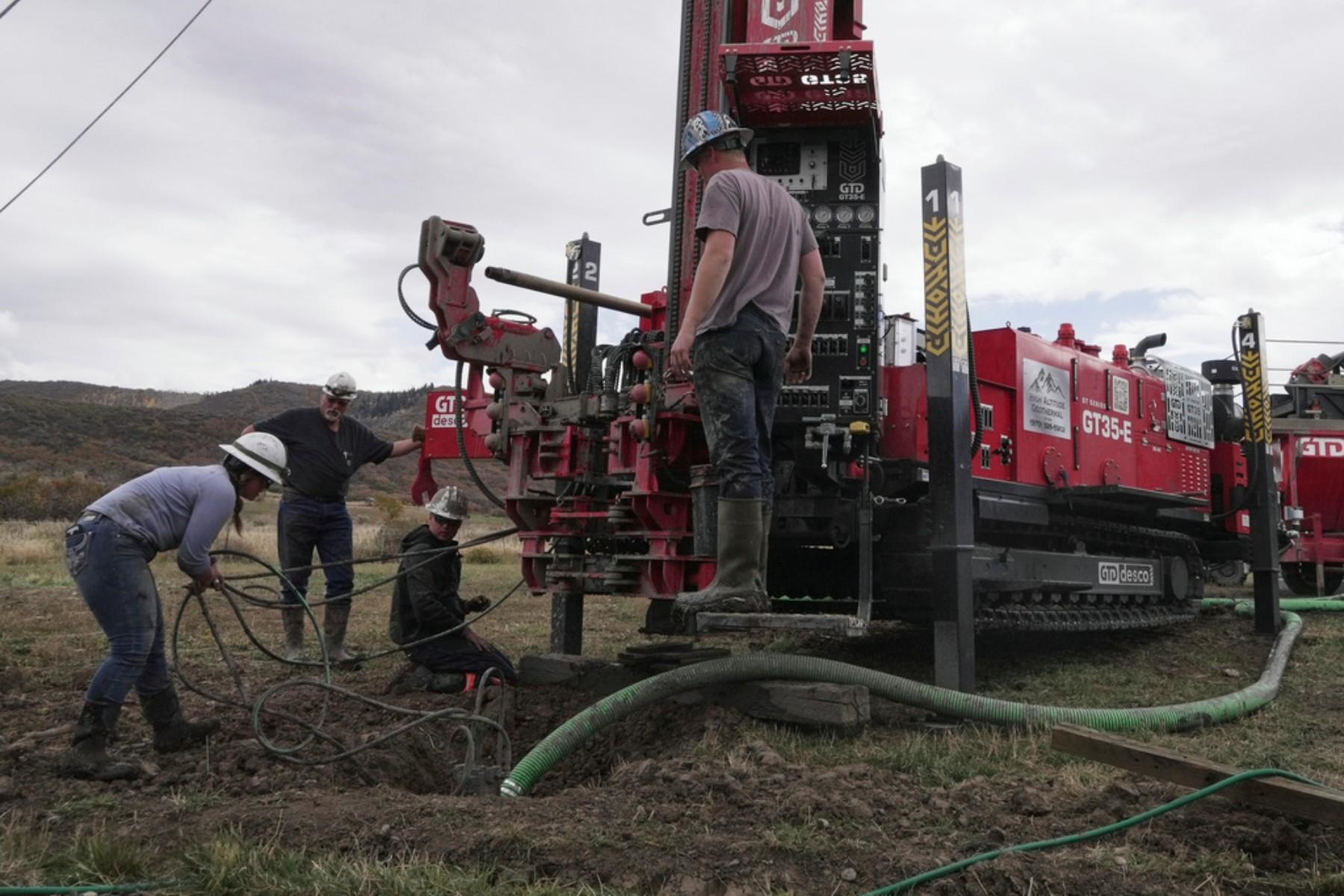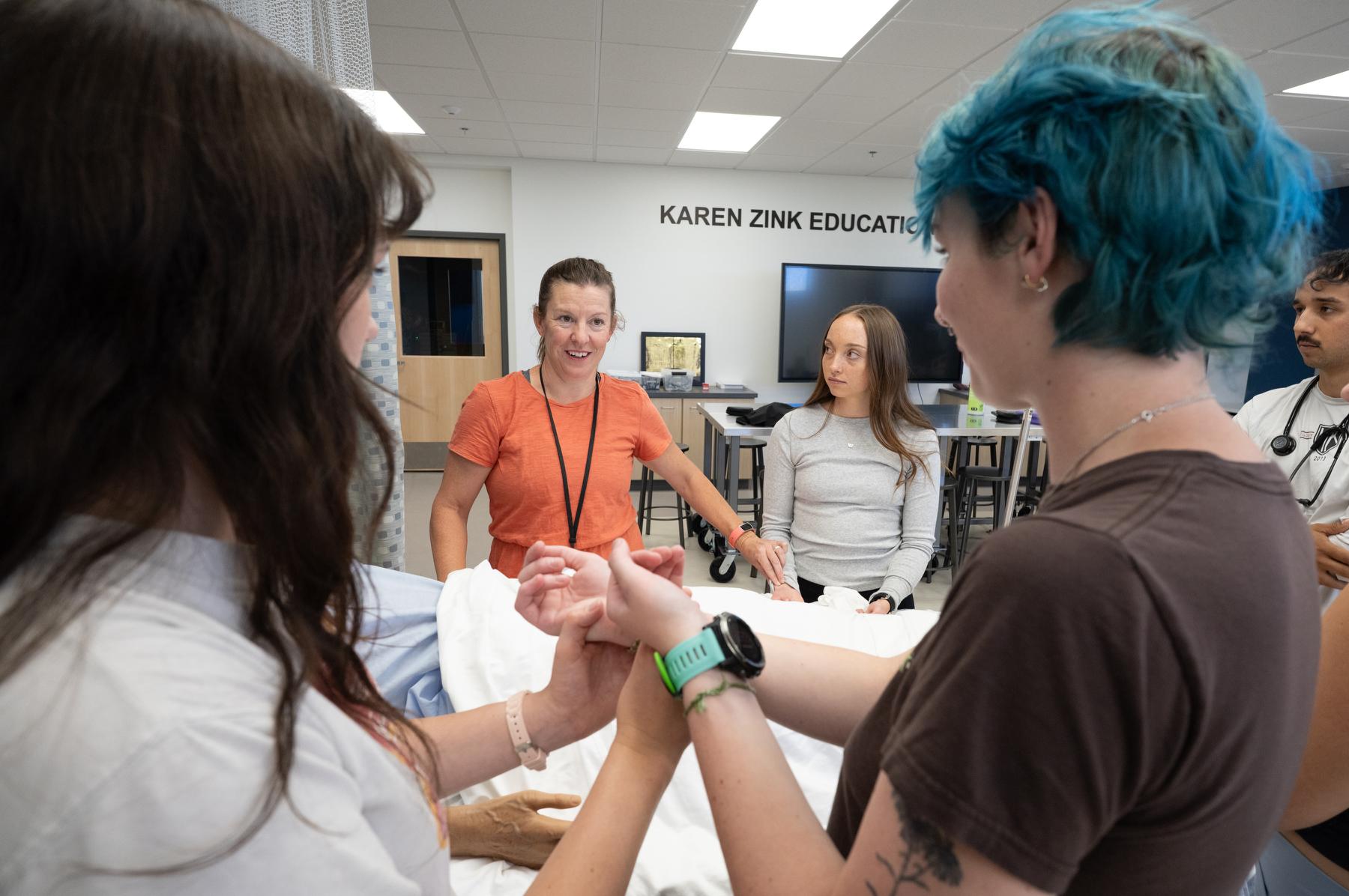
Liz Hatch just started her nursing studies as a junior at Fort Lewis College in Durango.
From Los Alamos, N.M., she spent her freshman and sophomore years completing prerequisites like anatomy, biology and chemistry. Now, she’s learning how to take blood pressure, temperature and heart rate in the first semester in the college’s new $2.3 million nursing program.
She’s one of about two dozen students who — leaders in the program hope — will complete the program with a bachelor’s in nursing through a new joint-degree program with the University of Colorado Anschutz, and then serve the health care needs of residents of rural communities in southwest Colorado.
“I had my sights set on the nursing program,” said Hatch, “I [had] very long days, and just so much brain-power was used throughout the day,” she said of the two years of preparation.
“Now we are learning skills that we’ve been waiting to learn, and getting to play nurse every day,” she said during an interview from her on-campus dorm room, where her bed was decorated with stuffed animals.
The program is on the Fort Lewis College campus, but linked to CU Anschutz’s program, which is about 10 times larger, with 200 people in any given nursing cohort.
“We have the strengths of Fort Lewis College, which really does a phenomenal job of supporting their students – and the top baccalaureate program in the state that’s already accredited and has a very strong program,” said Amy Barton, a nurse, professor and chair of rural health nursing with CU Anschutz, who helped form the link between the two campuses. “Combine those together, and we’re hoping for amazing outcomes to support the workforce in the future.”
The new program aims to anticipate a projected shortage of registered nurses, and stop it from impacting the staffing at facilities in the rural Four Corners of the state, where Colorado meets New Mexico, Arizona and Utah, members of both programs said.
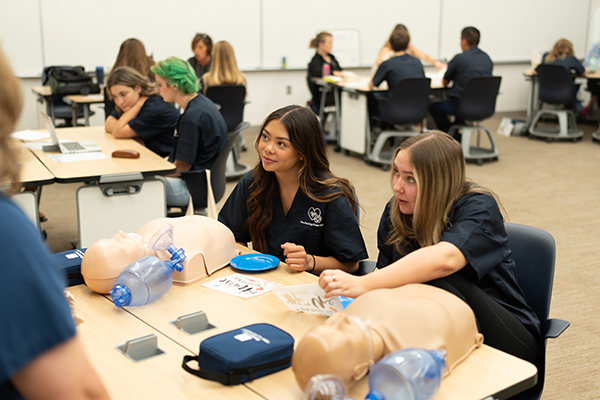
The American Association of College of Nursing’s Nursing Shortage Fact Sheet, updated in May 2024, states: “According to a Health Workforce Analysis published by the Health Resources and Services Administration (HRSA) in November 2022, federal authorities project a shortage of 78,610 full-time RNs in 2025 and a shortage of 63,720 full-time RNs in 2030.”
Not having enough nurses leads to patients going back into the hospital, according to the paper, which also noted that one study found "higher patient loads were associated with higher hospital readmission rates. The study found that when more than four patients were assigned to an RN in pediatric hospitals, the likelihood of hospital readmissions increased significantly.”
Barton said that the shortage could hit rural areas harder. “A lot of the nursing shortage is a distribution issue, with more nurses kind of concentrated in urban settings as opposed to in rural hospitals,” she said. “That’s also a pattern that occurs throughout the United States.”
The program has two full-time faculty members working alongside director Maggie LaRose, who, during a recent visit to campus in Durango, pointed out some of the program’s features. Those include learning opportunities that can happen on one campus and benefit students on the other. “We have a project called SIM capture, that allows for the recording and broadcasting of simulation so the students have the potential to learn simultaneously from each other across the state.”
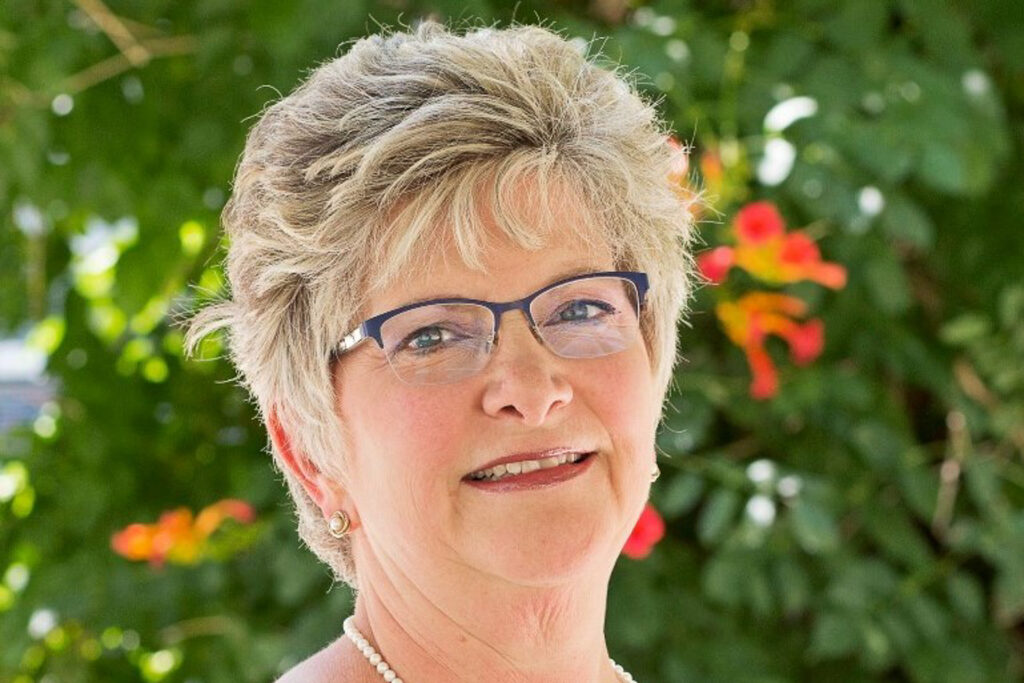
That could look like students practicing checking blood pressure and lung sounds on a mannequin patient in the Fort Lewis program suite, while students at CU Anschutz in Aurora watch the student on a screen, or the reverse.
Liz Hatch has been using the mannequins for practice during lab time.
“Gosh, they’re awesome,” she said. “They speak, they can moan, they can breathe, give you all the vital signs. I’m trying to, as our professors say, suspend the disbelief that you have, and walk in and just kind of have an open mind. It’s a mannequin, but also you need to view it as a patient. Just having the technology that we have is so cool. It makes it feel as human as possible.”
During a recent visit, LaRose pointed out rooms set up to simulate environments where nurses might find themselves: one looks like a homey living room with a couch, shelves and homey touches; another is set up like a hospital room: stark, with white linens on metal beds upon which the mannequins rest until activated. Students show up in the scrubs they might wear on duty.
A mannequin dressed in a hospital gown lay on a bed, wearing a wig with narrow red lips painted on. When prompted from a computer by an instructor, she began to moan and make other sounds of distress the nursing students were learning to respond to. Nursing instructors can make things more complicated by making changes to the mannequin’s vital signs or using a mannequin representing a different age to see how students adjust their efforts to care for patients depending on their specific needs.
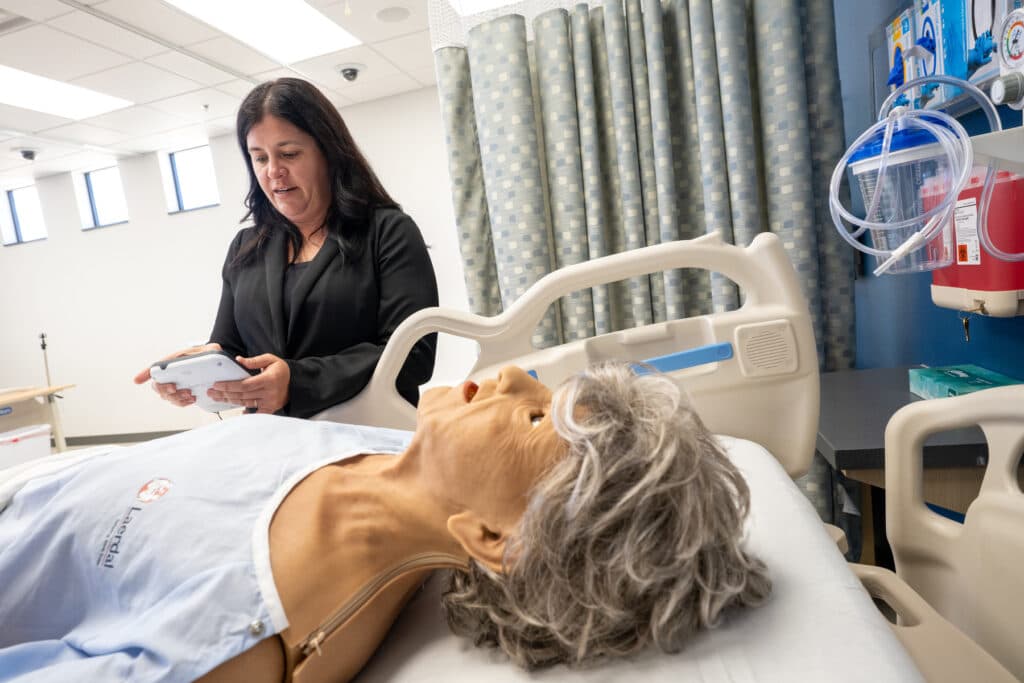
“We could potentially have a kid with asthma and an 82-year-old man with COPD,” LaRose said. “So they’re thinking, ‘OK, these are both respiratory, but how different is it when it’s a pediatric patient? How different is it when it’s acute than someone who’s chronic and older?’ A lot of scenarios allow us to personalize the experience.”
She pointed out a room where the nursing instructors can tweak the responses of the mannequins to see if the nurses will come up with the right intervention.
“Here is where we can manipulate all of the things,” said LaRose, standing in a small, dark room with a two-way mirror from which to watch the students.
“We could change the pulse rate – would they have just given a blood pressure medication? So then, a little later, we can see the blood pressure go down. So this is what it looks like behind the scenes … It’s meant [for] students to make decisions ... If the students go a little off track, we can manipulate and make some changes. It’s essentially meant to be a learning tool.”
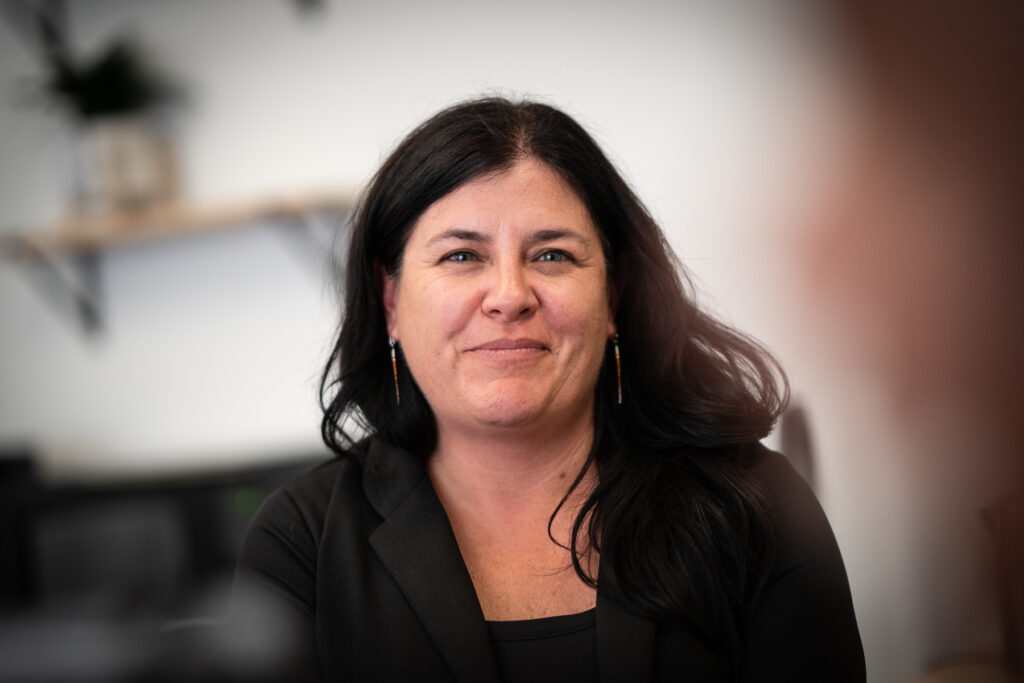
LaRose said after students take about two years of prep courses, they then have to complete about 800 hours practicing both in health care facilities like hospitals and mental health clinics, as well as in the simulation labs on campus.
The program can take 24 students and is just one or two spots short. It takes five semesters to complete, and after that, they hope students will stay in rural areas rather than be snatched up by bigger cities or get burned out.
“We’ve been doing a lot of pipelining,” LaRose said, “recruiting from local high schools for people who want to be nurses, and to stay and work in this community.”
That’s what Hatch said she’s planning on doing — she said she might want to become an ER nurse. After earning about $15,000 in scholarships and being cheered on by her older sister, younger brother and 2-year-old half sister, she hopes to work in a rural setting rather than a large city.
“The city scene? Um, a little too populated for my taste,” she said. “Here in Durango, it truly does feel like home. It just has a community feel that big cities don’t have.”
